Get The Best PageSpeed Score
For Your WordPress Website

How To Improve The Google Page Experience To Get A Better SEO Ranking
Google Page Experience has been a major ranking factor ever since Google updated its ranking algorithm prioritizing rewarding websites that offer its visitors a smooth browsing experience with a better SERP ranking.
That doesn't mean the content on the page no longer holds the same value. Content, as you know, is still the king. After all, people come to your website because of the content, and it is the biggest deciding factor in the organic SEO game, along with backlinks.
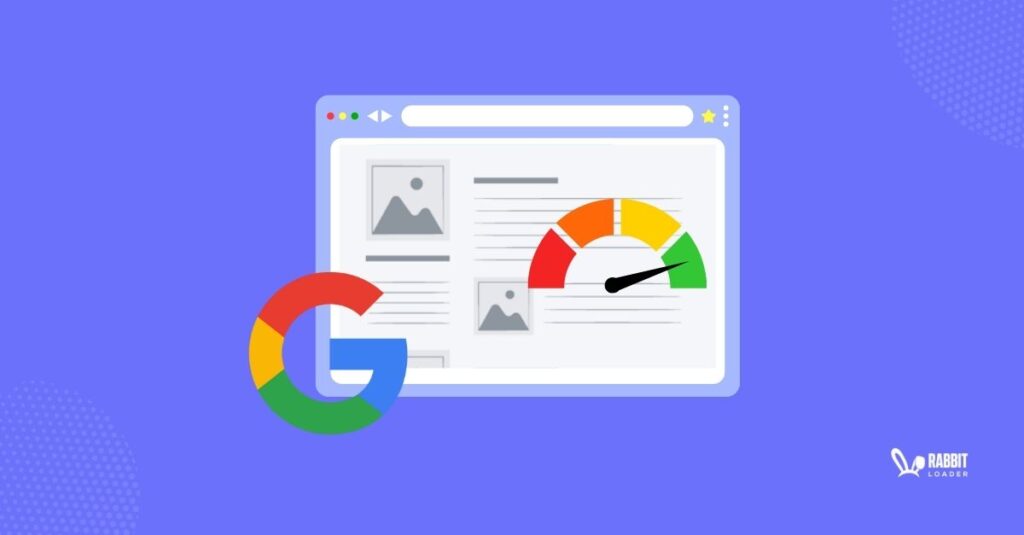
But over the years Google page experience has become a major ranking signal as it helps google assess the user experience, Google has been pushing for a better user experience by rewarding websites with better-perceived user experience in their ranking algorithm.
In May 2020, Google introduced page experience to its ranking algorithm. Ever since improving the user experience has become more important to SEOs than the web development team.
Improving the page experience is a part of Technical SEO, it requires a fair amount of time and patience. Due to its difficulties, many SEO professionals often overlook this, especially considering the difficulties of improving the page experience for an old website.
In this blog, we will cover,
- Factors that impact page experience
- How to measure Page experience.
- Why should you improve the page experience and
- Tips to improve your Google Page experience.
Finally, we will wrap up by explaining how the RabbitLoader plugin can help you improve the page experience of your already-developed WordPress websites with just a few clicks, to give you the much-needed competitive edge in the organic ranking race.
What is Page Experience?
Google introduced a set of signals that help it determine how a visitor to a website might perceive the website. The goal of the Google page experience is to determine whether an average visitor would find your website user-friendly or not.
Though the page experience ranking factor was added back in 2020, it has undergone several updates since then.
Other than just doing good on Google’s algorithm to improve SEO rankings, the page experience leads to monitoring & delivering a superior user experience, which improves the average on-page time and reduces the bounce rate for your landing pages., which has an indirect pact on the website's SEO ranking.
Factors Impacting Page Experience
Which factors does Google take into account when it comes to the page experience of a website?
There are 4 major attributes that determine the user experience of your web pages,
- Core Web Vitals
- Mobile responsiveness
- Intrusive Interstitials
- HTTPS security/ encryption
Core Web Vitals
Core Web Vitals refers to the set of performance metrics introduced by Google to determine a website’s performance based on page loading time, visual stability, and responsiveness.
Core web vitals are a huge part of your page experience. To improve the page experience of you website you must first fix any issues that might fail your website in the Core Web Vital test.
We have outlined the 3 Pillars of Core Web Vitals,
Largest Contentful Paint (LCP)
You can picture LCP (Largest Contentful Paint) is the time it takes your website to load up every visual element completely in the visible area of the website when a user first loads your webpage.
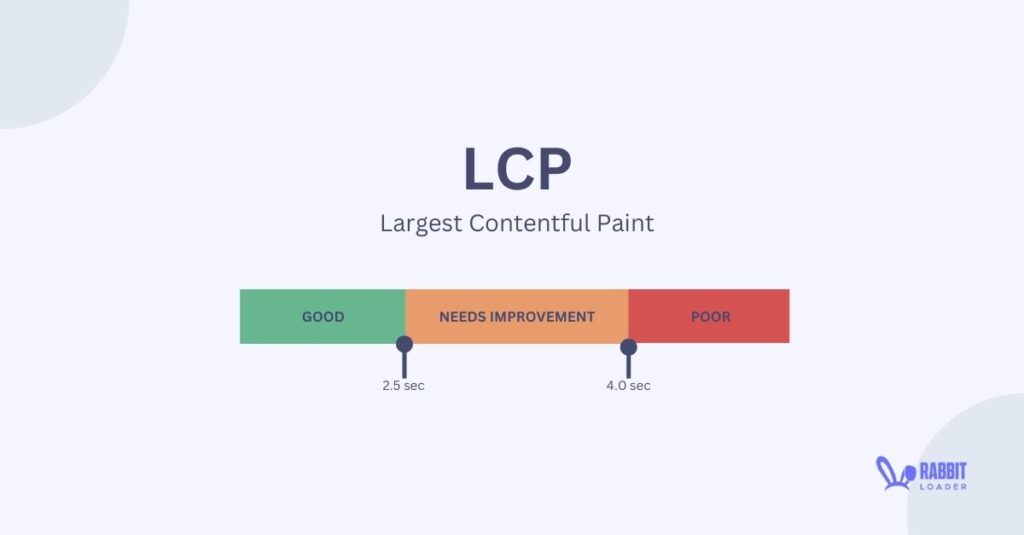
It could include a hero image, background image or feature image or a block of text.
In order to b considered a good user experience, the LCP time needs to be less than 2.5 seconds or less, anything beyond 2.5 seconds would need improvement.
Cumulative Layout Shift (CLS)
When loading a website you might notice some elements moving around for a split second before they come to their final position. This is nooticeable especially when a website is loading ads without reserving a space for that add to appear at the time of first loading.
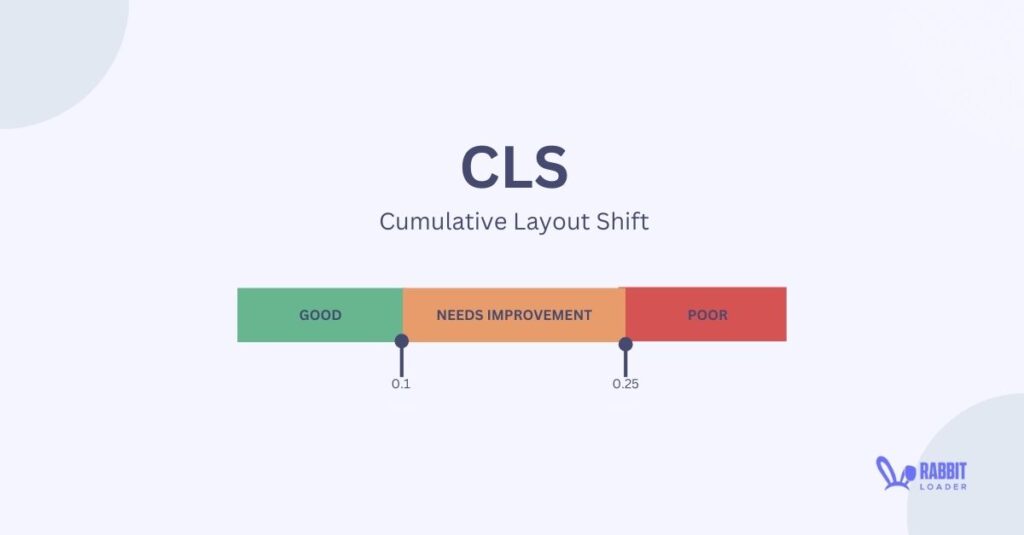
It is also very noticeable if your website is not very responsive for different screen sizes, the visual layout might look perfect of certain screens but might cause the above issues when opened on screen with different resolutions.
CLS is the summation of the movement of these movements of visual elements on your website.
For a n optimal user experience, the CLS score needs to be 0.1 or less. For more details on how the CLS score is calculated you can visit our older blog post.
Interaction to Next Paint (INP)
Interaction to Next Paint (INP) assess how quickly a web page is reacts to an input from the user.
For example if you are clicking a button where clicking it makes the button change color from blue to red, the blue & the red buttons represent 2 different frames that's your website is rendering or “painting”.
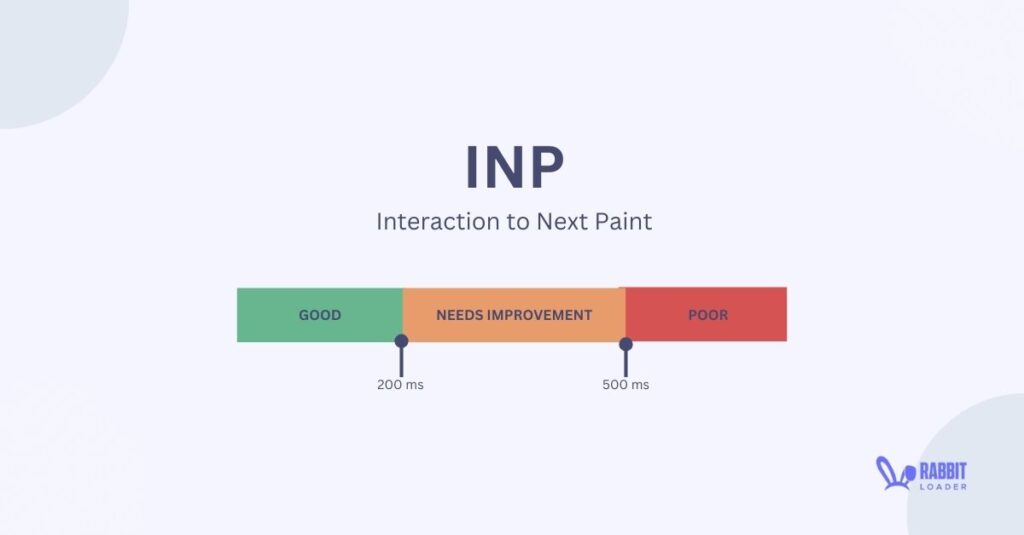
The time taken by your website from the click to showing the red button is know as INP. Its the time your website it taking for the visual update.
An ideal INP time should be less than 200 milliseconds.
Mobile Responsiveness
A mobile processor is not as advanced as a desktop. Along with the weaker processors, mobile devices are also tested on weaker data networks. Thus, a website usually takes more time to load on a mobile device, which increases its bounce rate.
The website Digitalsilk mentions that mobile devices have a 51% higher bounce rate compared to desktops. You can find the bounce rate comparison for your website on Google Search Console & see how your website is doing when it come to mobile bounce rate.

A mobile-friendly website should not break the visual elements of the website when loading on a mobile device & they pages are usually smaller in size & loads the first fold i.e. is the visible area of your website (without scrolling) quickly on visitors’ mobile for a better user experience.
Since the majority of web traffic comes from mobile websites, Your website must be mobile responsive in order to achieve a desirable conversion rate.
Intrusive Interstitials
Intrusive interstitials refer usually to the pop-ups and other types of overlays that covers almost the whole webpage & doesn't allow user to interact or even see the content of the website.
Though interstitial pop-up help improving the conversion rates & it has ben very popular among bigger blogs and news websites they can dilute the the user’s experience for desktop users & it is outright annoyance for the mobile users.
Keeping the page experience in mind google has started to penalize the website that are employing Intrusive Interstitials by making subtle changes to its algorithm.
Intrusive Interstitials also make it difficult for search engines like Google to understand a page’s content, which may affect its organic ranking in Search Engine Result Pages (SERPs).
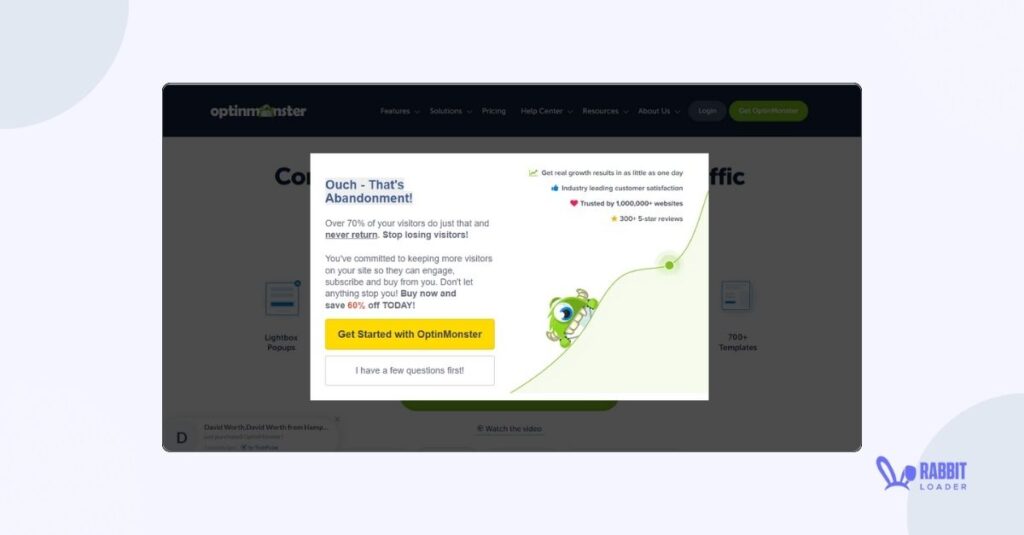
In the above image, you can see the dialogue box covering almost the entire content, which is not good for the user experience.
Although its a great tool to generate leads & converting users into customers, one should avoid using too many interstitials on their website if your priority is to improve the page experience.
HTTPS Security/ Encryption
Hypertext Transfer Protocol Secure (HTTPS) refers to the security protocol that allows encrypted data to be transferred between users and a website. Using HTTPS instead of HTTP improves the website’s security.
Most of us know is as SSL, it has been the standard for many many years now & frankly no website should start without having SSL. Most browsers including chrome might even show message showing the website is not safe to visit if you are not using the SSL encryption or if it has failed for some reason.
How Does Page Experience Impact SEO Rankings?
When it comes to SEO ranking, page experience plays a significant role as it directly impacts the website’s average on-page time and bounce rate.
Google rewards web pages with a seamless user experience and ranks them at the top of the SERPs.
So what do you need for a better page experience? Here’s the list,
- Pass the Core Web Vitals.
- SSL Encriptions
- Visual stability
- Avoid intrusive interstitials
- Mobile-friendly website.
Improving the page experience is essential if you want a improve the page’s organic ranking in the Search Engine Result Pages (SERPs). But to improve something you would first need to measure it.
How to Measure Page Experience?
Before we start working towards improving the page experience diving into the solution, you need to diagnosing the issues that's causing your website to produce a poor page experience.
There are 2 wildly popular tools available for measuring page experience.
- Google PageSpeed Insights
- Google Lighthouse
- Google Search Console
Google PageSpeed Insights
Google PageSpeed Insights is the most popular tool used to measure the Page experience. Developed by Google to determine a website's performance based on the performance of Core Web Vitals metrics, you just need to put the website’s domain name and click on the Analyze button.

The recommendation section includes suggestions to improve the performance of the Core Web Vitals metrics.
Although its a very useful tool, it cannot take intrusive interstitials into account to assess the page experience
Google Lighthouse
Google Lighthouse is the free Google tool to measure a website’s performance. It provides the overall score on the website performance based on the field and lab data.
To measure website performance in the Google Lighthouse tool, open the web page in the browser, right-click on it, and click on the ‘Inspect’ button.
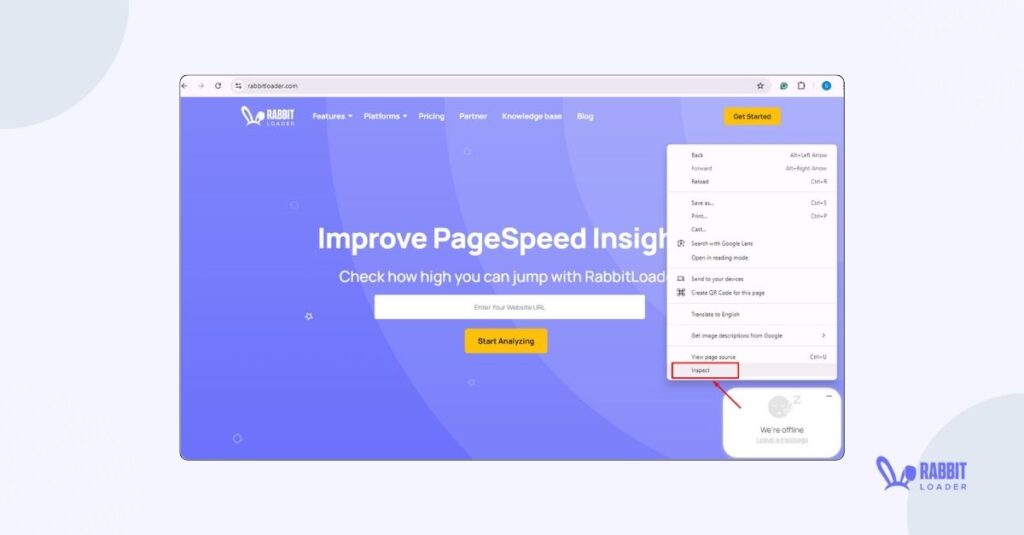
Go to the “Lighthouse” tab. After selecting “mode,” “device,” and “categories,” click on “Analyze page load.” After waiting a while, you can see the website's performance.
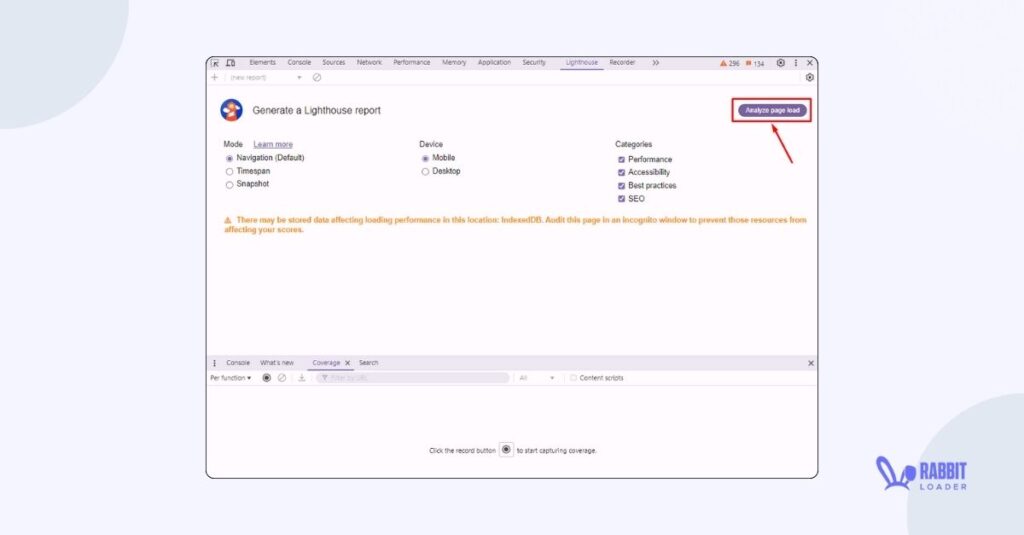
Google Lighthouse also provides you with suggestions to improve the website's performance, which automatically improves Google’s page experience.
Google Search Console
Although both Google PageSpeed Insights & Lighthouse are convenient to check the page experience, the best way to check for the page experience is Google Search Console.
The dedicated Page experience menu would show you how many of your webpages are passing the Core Web Vitals test & if they have any security issues.
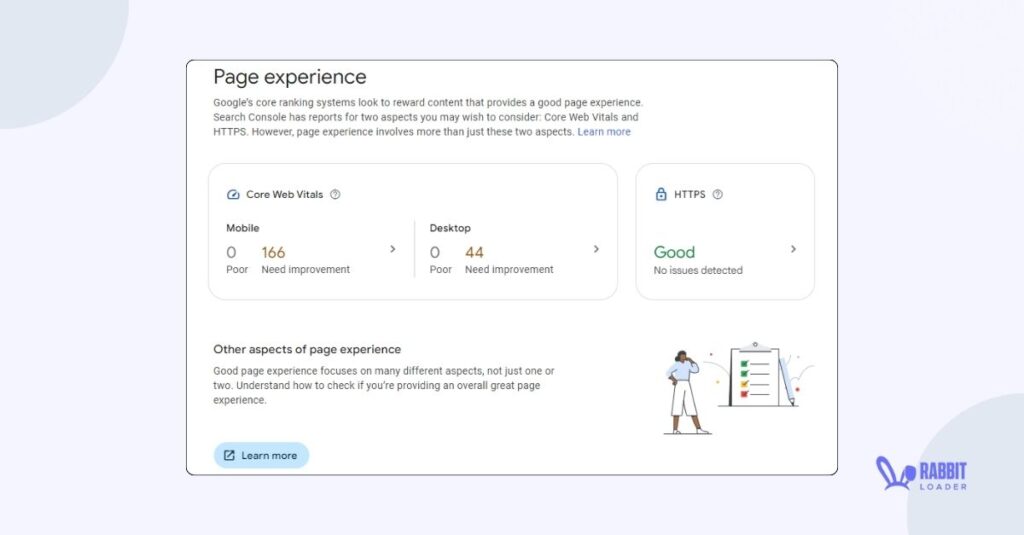
It would also show you the exact issues causing you to fail Core Web Vitals & the number of pages are affected by it.
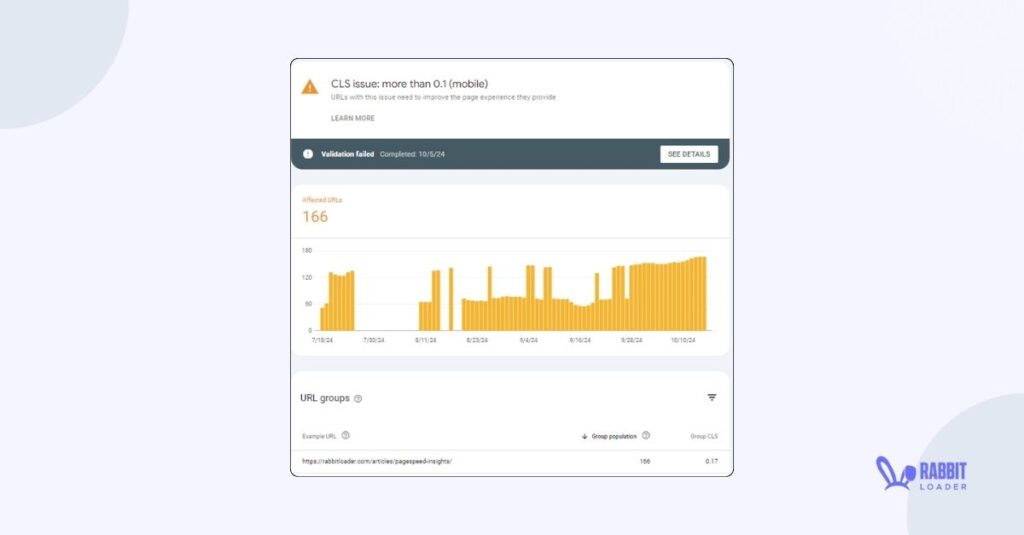
How to improve Page experience
A good page experience must be a priority of any SEO, since we all are trying to be on top of the search results. Building backlinks is expensive, creating quality content is both time consuming & expensive and these efforts might not reach their full potential if your page experience is sub par.
Get The Best PageSpeed Score
For Your WordPress Website
Here are the 4 actionable ways to improve the page experience:
- Optimize the of Core Web Vitals
- Improve the mobile responsiveness
- Improve the website’s security
- Reduce intrusive interstitials
Optimize The Core Web Vitals
Optimizing Core Web Vitals metrics can significantly improve the website’s initial page loading, visual stability, and page responsiveness. Let’s see a few tips to optimize the performance of Core Web Vitals metrics.
- Compress the large-sized images losslessly by converting them into next-gen formats.
- Add lazy load to the non-critical images.
- Implement browser caching.
- Use a Content Delivery Network (CDN) to serve the resource files from the PoP's.
- Reduce the page size by minifying and compressing the resource files such as HTML, CSS, and JavaScript.
- Use responsive images to improve the CLS performance.
- Optimize the web fonts.
Improve The Mobile Responsiveness
While mobile users are increasing rapidly, improving mobile responsiveness can improve the website’s dwell time & conversion rate. It also helps you achieve a better ranking in the SERPs.
To improve the mobile responsiveness of a website you need to use,
- Responsive Theme
- Responsive Images
Responsive theme & responsive images can adjust their size according to the screen size of your visitors & do not deliver unnecessary large files for the mobile screens.
Improve The Website’s Security
The best way to improve the website’s security is to use a HTTPS encryption, instead of HTTP to transfer encrypted data.
Additionally, enforcing a strong password policy for all accounts, including editors, administrators, and subscribers, can significantly improve the website’s security.
Reduce Intrusive Interstitials
According to the neilpatel.com website, almost 60 % of visitors would abandon your website due to the intrusive interstitials. Hence reducing the intrusive interstitials is essential to improve the user experience as well as the SEO rankings.
Let's discuss some best practices to make the intrusive interstitials strategic and minimal.
- Try to add pop-ups that are relevant to the website’s content instead of any promotional ads.
- Always add a clear ‘Close’ button so that the user can easily close the pop-up if they find it irrelevant.
- Ensure the pop-up will only cover a small portion of the screen.
Improve Page Experience with RabbitLoader
Optimizing Core Web Vitals performance is a huge part of improving the overall page experience. However, it involves some highly advanced solutions that can be challenging for a non-coder.
Most website owners or technical SEO experts are actively looking for optimization tools and spend a fair amount of time researching them.
Get The Best PageSpeed Score
For Your WordPress Website
However, most of them end up installing the wrong plugin or installing ten different plugins which may slow down the website’s PageSpeed performance further.
A better solution to your slow website is RabbitLoader. Let’s explore how RabbitLoader will improve the Core Web Vitals performance.
Image Optimization
RabbitLoader optimizes all your images by converting them into next-gen formats such as WebP and AVIF which compress them losslessly (reduce the image size without compromising the quality), improving the LCP and INP performance.
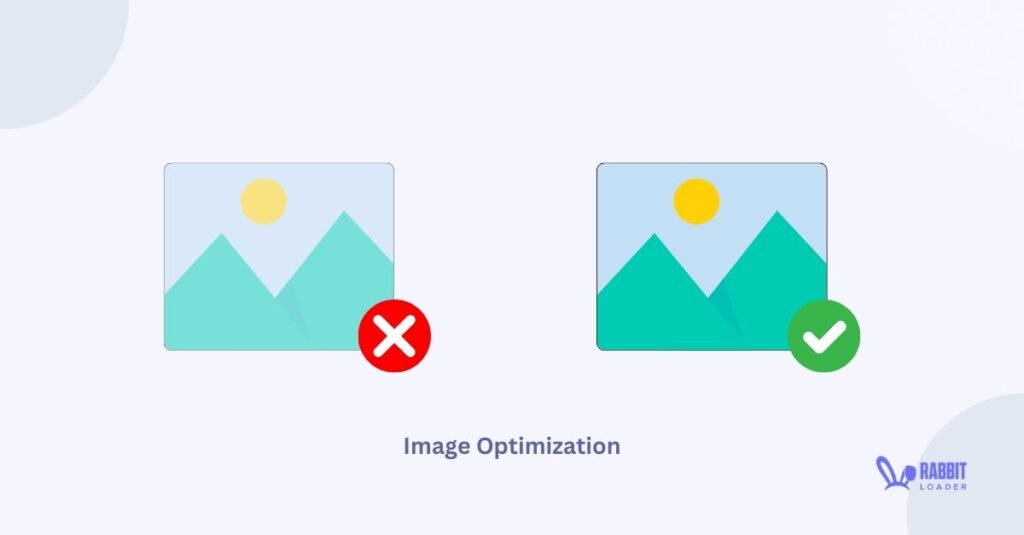
Not only optimizing the images but RabbitLoader also lazy loads the off-screen images to boost the initial page loading time which can lead to improving the Core Web Vitals performance, especially the LCP performance.
Reduce The Page Size
Reducing page size can significantly improve the page loading time as well as the Core Web Vitals performance.
In order to reduce the page size, RabbitLoader removes some characters from the coding files that are unnecessary to render the page. This is known as minifications (also known as minimization).

RabbitLoader will enable the advanced brotli compression method to get the best compression level. By compressing the text-based resource file, RabbitLoader will speed up your website which can improve the LCP and INP performance.
Implementing An Efficient Browser Caching Mechanism
By implementing an efficient browser cache mechanism, RabbitLoader helps you store resource files such as HTML, CSS, JavaScript, and media files (images) temporarily, retrieving them quickly. RabbitLoader also ensures that the cached content is always updated.
Use A Premium Content Delivery Network (CDN)
Once you have installed RabbitLoader, you don’t need to invest your time and effort in an external Content Delivery Network (CDN). RabbitLoader has an in-built premium CDN with 300+ PoPs.
RabbitLoader distributes the static content among those 300+ PoPs which can reduce the network latency and speed up the website’s page loading time as well as improve the Core Web Vitals performance.
Optimize The CSS File
CSS optimization plays a significant role in improving Core Web Vitals performance and passing the Core Web Vitals assessment. However, as CSS optimization is one of the most difficult optimization techniques, most optimization tools are unable to do this.
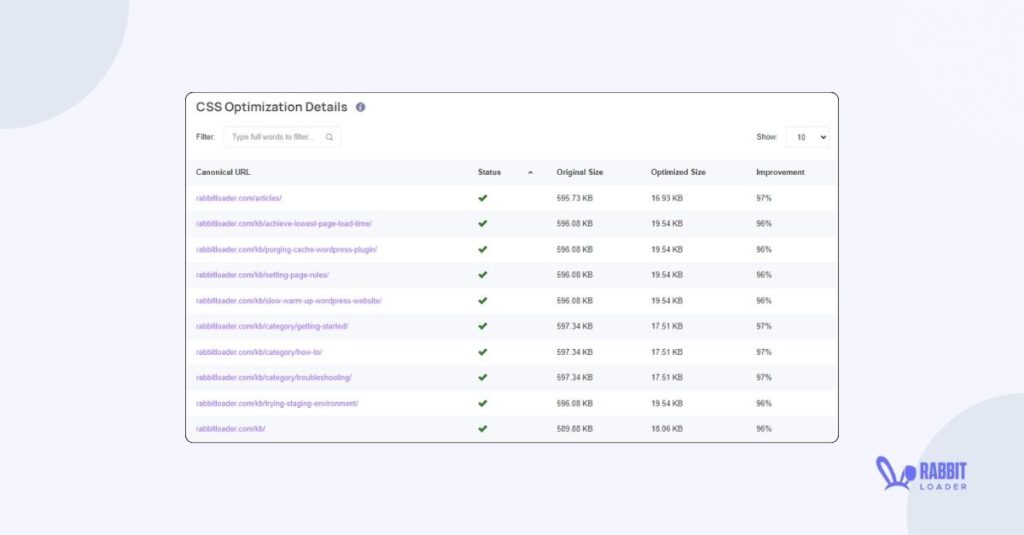
RabbitLoader optimizes the CSS file by reducing the unused CSS and generating the critical CSS file which improves the Core Web Vitals performance, especially the LCP and INP performance.
Optimize The JavaScript File
RabbitLoader optimizes the JavaScript files by deferring the JavaScript functions that are not required during the initial page loading time. While manually optimizing the JavaScript files requires a lot of coding knowledge, with the help of RabbitLoader, you can optimize the JavaScript file within a few clicks.
Reduce The Impact Fraction And Distance Fraction
By reducing a website's impact and distance fraction, RabbitLoader improves its visual stability, which can enhance the user experience and SEO rankings.
To learn more about impact and distance friction, read the Cumulative Layout Shifts blog.
The easiest solution to you page experience issue is to use RabbitLoader and optimize your Core Web Vitals performance, which leads to improving the user experience and helps you achieve a better ranking in Search Engine Result Pages.
Get The Best PageSpeed Score
For Your WordPress Website